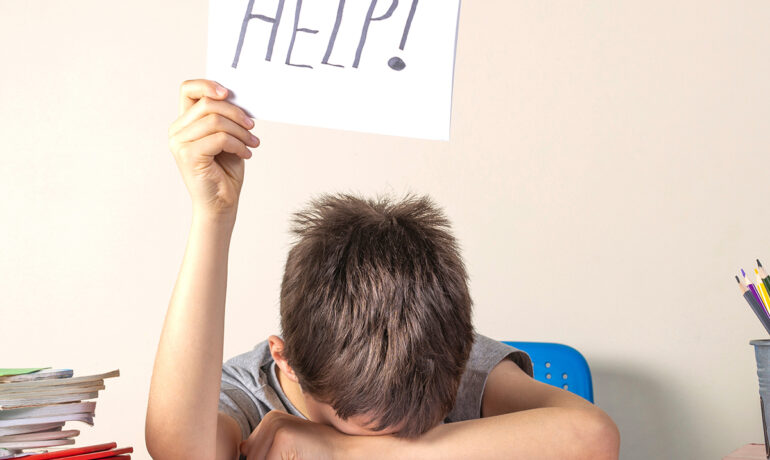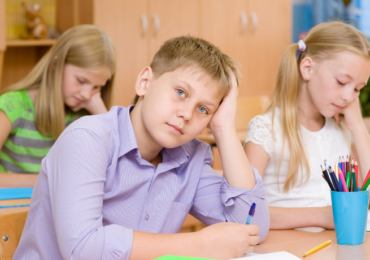Learning disabilities frequently co-occur with overlooked vision problems in children, compounding academic challenges. Conditions like double vision and poor eye focus exacerbate reading, writing, and math difficulties. Yet vision screenings miss subtle deficits that impact learning.
Vision therapy for children can correct these issues through tailored exercises that enhance eye coordination, movements, acuity, and comfort. It builds stronger neural foundations for processing visual information and learning. Children undergoing vision therapy gain significant improvements in reading comprehension, attention span, and school performance.
While learning disabilities are complex and multifactorial, it is crucial to recognize the potential impact of vision problems on a child’s development. By addressing these issues with vision therapy, children can improve their visual comfort, attention spans, and, ultimately, their overall success in school.
Understanding Common Learning Disabilities
Learning disabilities such as dyslexia, ADHD, and dyscalculia are prevalent in children and can significantly impact their academic progress and overall development.
Dyslexia is a learning disability that affects reading and language processing skills. Children with dyslexia may have difficulty decoding words, recognizing sight words, and comprehending written text. They may also need help with spelling, writing, and sequencing information.
ADHD (Attention-Deficit/Hyperactivity Disorder) is a neurodevelopmental disorder that affects focus, attention, and impulse control. Children with ADHD may have trouble staying on task, following instructions, and organizing their thoughts and materials. They may also be restless, impulsive, and have difficulty sitting still for long periods.
Dyscalculia is a learning disability related to math. Children with dyscalculia may struggle with number sense, understanding math concepts, and performing calculations. They may have difficulty recognizing numbers, telling time, counting, and understanding math symbols and operations.
Children with learning disabilities may experience frustration, low self-esteem, and challenges in social interactions. However, with the proper support, accommodations, and interventions, children can overcome these challenges and thrive academically and personally.
Vision Problems Often Mistaken for Learning Disabilities
Convergence insufficiency, amblyopia (lazy eye), and refractive errors are vision problems in children that are sometimes mistaken for learning disabilities.
Convergence insufficiency: Difficulty with eyes working together, causing eye strain and double vision.
Amblyopia: Reduced vision in one eye due to misalignment or focus differences between eyes.
Refractive errors: Issues like nearsightedness, farsightedness, and astigmatism affecting reading and learning.
These problems can go unnoticed in standard eye screenings. Children with undetected vision issues might be wrongly diagnosed with learning disabilities, showing symptoms like poor attention and low reading levels.
Parents and educators should consider comprehensive eye exams to detect these vision problems. Addressing them can improve a child’s academic performance and visual comfort.
The Overlap: Vision Problems and Learning Disabilities
Children with vision issues often show symptoms similar to learning disabilities, such as difficulty reading, avoiding close tasks, and having frequent headaches. This overlap exists because the visual system is intertwined with brain areas responsible for learning. Moreover, any developmental issues in the optical system during childhood can disrupt learning.
Not every symptom directly points to a vision or learning problem. A detailed evaluation by a vision specialist is essential to pinpoint the root cause. Vision therapy, a tailored program supported by research, effectively improves children’s visual skills, comfort, and attention. Addressing these visual problems can significantly enhance a child’s academic performance. It’s vital to consider both vision and cognitive aspects when tackling learning challenges in children.
Enhancing Learning by Addressing Vision Problems
Vision therapy, a targeted program to bolster visual skills and comfort, can improve a child’s academic capabilities. It benefits children with challenges like double vision or poor eye coordination. Therapists pinpoint visual issues through detailed eye exams and then design personalized therapy exercises.
These exercises, utilizing tools like electronic targets and specialized instruments, strengthen visual skills and rectify issues like refractive errors. The therapy enhances optical clarity, focus, and coordination. After vision therapy, many children experience notable academic progress, including significantly improved reading levels, attention spans, and overall grade-level performance.
By addressing vision problems and enhancing visual skills, vision therapy provides children with the foundation they need to succeed in school and other tasks requiring visual processing. Parents and educators need to recognize the role of vision therapy in improving learning outcomes for children with vision problems.
Tips for Parents and Educators
If you suspect that a child is struggling with a learning disability, it’s essential to consider the possibility that a vision problem may be contributing to their difficulties. Here are some signs to watch for that might indicate a vision problem:
Poor reading comprehension and slow reading speed
Headaches or eye strain during or after reading
Difficulty with hand-eye coordination or visual-motor skills
Poor attention span or easily distracted while reading or doing visual tasks
Double vision or blurred vision when looking at close-up or far-away objects
Difficulty maintaining focus or skipping lines while reading
Complaints of words or letters moving or “jumping” on the page
If you notice these signs, scheduling a comprehensive eye exam with a qualified pediatric optometrist or vision therapist is essential. They will be able to assess a child’s visual skills and acuity and detect any refractive errors or vision disorders.
At Rancho Santa Fe Optometry, our team of experienced optometrists provides exceptional vision services tailored to children’s unique needs. Our vision therapy programs are designed to correct vision problems and enhance functional vision skills, ultimately improving performance in school and beyond. We are committed to achieving the best possible outcomes for our young patients by utilizing advanced techniques and evidence-based practices.
Take the first step in improving your child’s vision by scheduling a pediatric eye exam today. Contact us at (858) 201-7956 or conveniently submit an appointment request form on our website. Invest in your child’s vision health and ensure they have the best opportunity for success in their academic and personal lives. Let’s give them the gift of a clear and comfortable vision for a brighter future.
At Rancho Santa Fe Optometry we offer comprehensive eye examinations for all ages. With a focus on children’s vision and vision therapy, our doctors test for visual acuity, visual efficiency skills and visual information processing starting in early infancy. The practice also provides diagnosis, treatment and management of diseases that affect the human eye and visual system, including dry eye syndrome, diabetic retinopathy, cataracts, macular degeneration and keratoconus.


